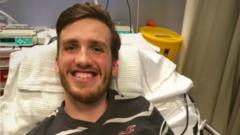An alarming report has highlighted a significant medical oversight within hospitals, revealing that a specific heart assist device continued to be used even after national health authorities had raised serious concerns about its safety profile. Data indicates that nearly half of all patients implanted with the particular heart pump following these warnings subsequently died shortly after receiving the device.
The concerns, initially flagged by the National Health Service (NHS), pertained to preliminary findings suggesting a higher-than-expected mortality rate associated with the device. Despite these early warnings circulating within the medical community, a number of healthcare institutions apparently continued to deploy the heart pump in clinical settings. This continued usage has prompted an urgent review into the decision-making processes and the communication channels surrounding medical device safety alerts.
Experts suggest a confluence of factors may have contributed to the prolonged use, including the urgent need for critical care interventions in often desperate situations, potential delays in fully disseminating and interpreting national guidance at local levels, and the complexities inherent in withdrawing established medical technologies. However, the stark reality remains that a substantial proportion of vulnerable patients underwent a procedure with a device that was already under official scrutiny.
The elevated mortality figures associated with the device underscore a critical failing in patient safety protocols. The implications extend beyond individual cases, raising profound questions about the speed and effectiveness of national health alerts, the accountability of clinical governance bodies within hospitals, and the ethical considerations involved when known risks are weighed against perceived benefits.
Moving forward, there are strong calls for comprehensive inquiries to understand why the warnings were not universally heeded and why the device remained in use. Such investigations are expected to lead to strengthened guidelines for medical device procurement, enhanced systems for reporting and acting on adverse events, and clearer directives for clinicians and hospital administrators regarding national safety alerts to prevent similar tragedies in the future.



